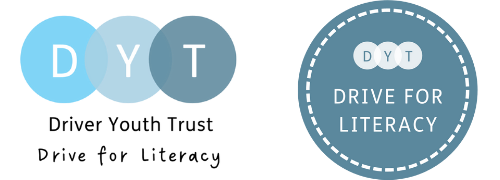All hail! In the inclusive classroom, the mini whiteboard is queen.
20/8/2018
The humble mini whiteboard has been popping up all over the place recently: on my twitter timeline, in conversations with teachers and most recently in research. It’s as if she is poking me in the back, ‘Oi, you forget me, I am undervalued and overused, give me some credit and attention’. OK Ms Mini whiteboard, I hear you.
Now, this could be very short because really, all you need to know is that they are fab, can be used in various ways and that they will change your classroom practice, especially for children with SEND.
Let’s look at some research. The Education Endowment Fund (EEF) recently reported a two month progress leap if students show their understanding instantly. This is a way of using the whiteboard warrior in assessment for learning. Effective, cheap and simple but there’s more.
Every TA will tell you the magic of the mini whiteboard but the inclusive classroom teacher with or without a TA would tell you the same thing. A couple of domestic issues; they need to be clean and clear and you need decent pens. Without these, the children who need them the most will struggle and they’ll have less effect.
For children who may find accessing learning in the classroom difficult, this jewel in the crown of accessories can be used in a number of ways:
- Key words – jot them down (add an image and you are dual coding, even better 🙂 )
- Frames (and I don’t mean writing frames which I’ll mention next) putting a limit on work, adding a border around the task, creating an end point is great for children who often feel overwhelmed by open ended pieces of work. A way of recognising this in some children is the classic ‘head on desk’ or the beginnings of disruptive behaviour by flicking some paper balls across the classroom. Swoop in armed with the queen of resources, kneel down next to the student and draw a frame. A series of bullet points with a box to tick on completion. Some prefer this to rubbing them out. Psychologically these two techniques are different and you may need to experiment with what works with each learner. By wiping away it reduces the list; great for some who like to have jobs done, you can see the stress reduce at the same time as the list of tasks do. The tick boxes however can be motivating for other pupils – ‘Look how many boxes I’ve ticked? I rock’. And gives you, the teacher a chance to reward and praise, ‘Three ticks already Alex, you do indeed rock’.
- Writing frames or scaffolding – writing a letter? Quickly draw boxes where the addresses and date need to go, a larger box for the text, and then a few boxes at the bottom for the ‘Yours sincerely’ and name. You can go further for students who need more, add Dear and Yours as sentence starters, or even number the paragraphs in the large box. It will take you two minutes and then it’s there for the student to copy the frame into their books – I guarantee, they’ll start writing in their books immediately. The whiteboard with a writing frame is a cure for writing inertia – FACT.
- The whiteboard is magical for spelling – write some down for a pupil to copy but even better, you can chunk the spellings into syllables, underline the tricky part of the spelling or the phonic pattern. Look – volcano. What’s it start with? V. How many syllables? vol/can/o. Ends with an o, that’s unusual isn’t it? It means burning mountain (draw burning mountain – dual coding again). You spelled it vulcano, interestingly you were more right than you knew as volcano originated from Vulcan, he was the Roman god of fire. It was first applied to Mount Etna by the Romans as they thought Vulcan used the volcano as his forge. So we have Vul/can – big bloke forging iron in a Vol/can/o. Okay, I may have gone off track there and you’re thinking, I have absolutely no time to do this for one student. Precisely but this is where you’d then praise your child with SEN further and go to the board and teach the last bit to the whole class, ‘Alex has reminded me to explain this, thanks Alex’. Who wouldn’t want to know about burning mountains and the God of Fire?
- Finally, it’s another form of non verbal encouragement. For those of you who already use a lot of eye contact, smiles, tapping on the desk and quietly doing a thumbs up, you’ll know this technique brings satisfaction to many students. The problem is, such subtleties don’t always work for children with SEN, they need more explicit communication directed to them. This can be easily overcome by saying their name first before nodding and smiling or some such non verbal praise but the mini whiteboard can add to this. Swoosh past and tick their whiteboard, or kneel down and draw a smiley face, even write a quick piece of feedback ‘This is ace, tick’. All quick and easy substitutes for facial expressions and gestures which will make the learner burst with pride.
There are many other ways of using this unsung hero but I’m aware summer is still (just about) calling and you need to go and relax with a Pina Colada. All I ask is that while you’re sipping away, you give a short thought to the mini whiteboard and make it one of your new academic year resolutions to use it more.


